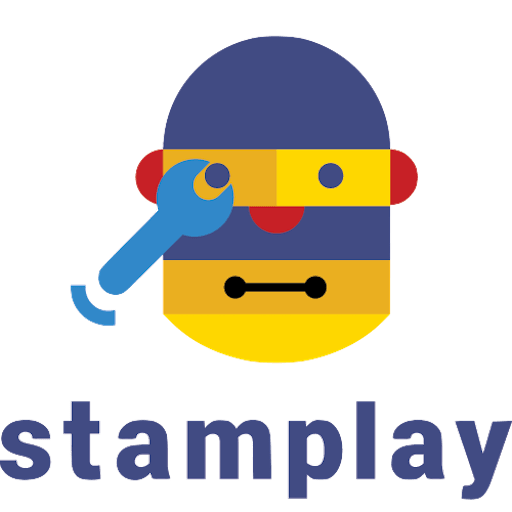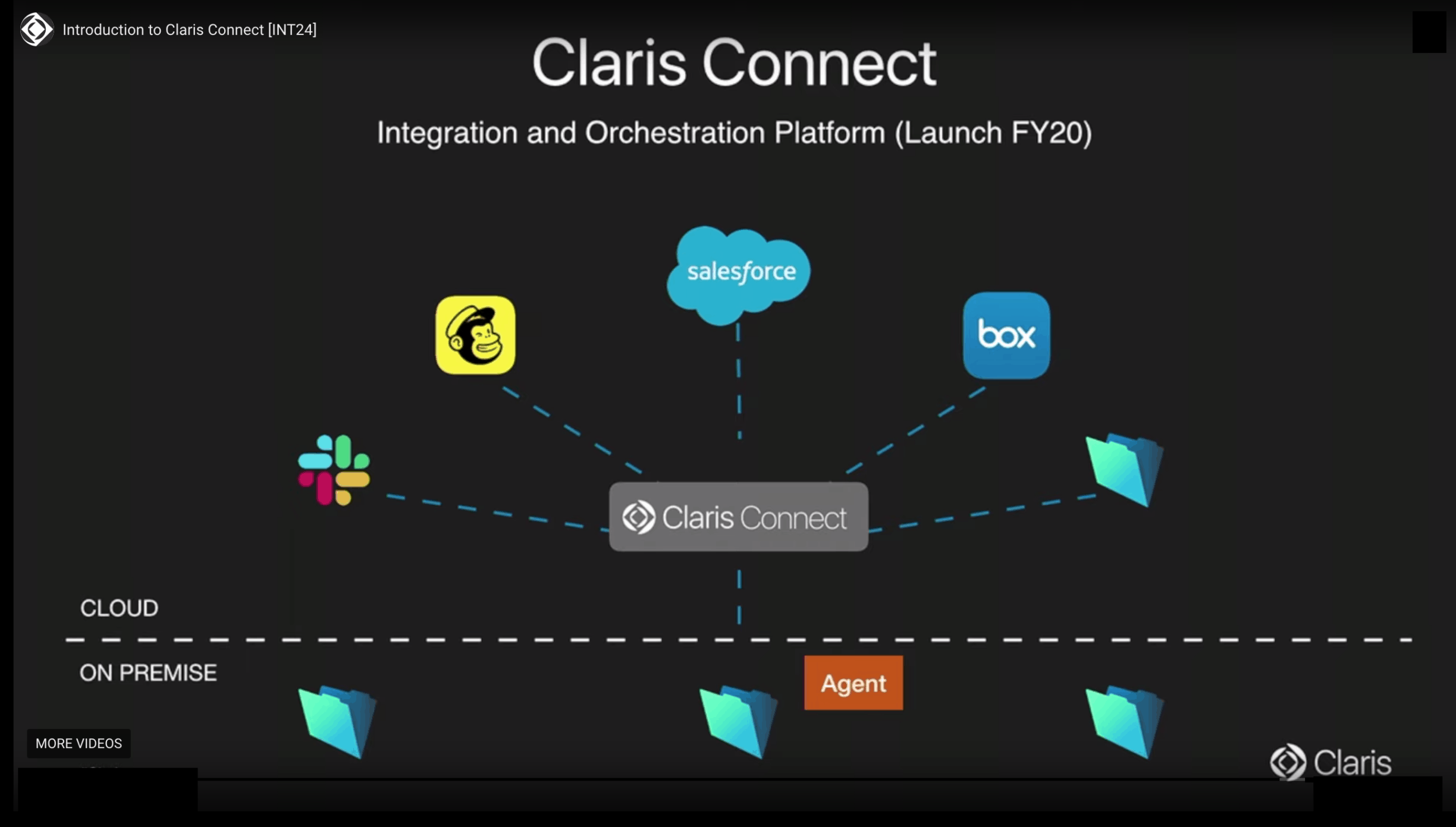Claris International is a technology innovation company that recently rebranded (formerly FileMaker, Inc.). Claris is a wholly owned subsidiary of Apple and has reported a consistent track record of 80 quarters of profitability. Claris currently has one released product called FileMaker that is already used in 95% of Fortune 500 companies. Over 50,000 organizations depend on FileMaker as their Workplace Innovation Platform of choice.
Claris has two new products in development that were announced at the FileMaker DevCon 2019 in Orlando, Florida.
- Claris Connect – A cloud connector SaaS solution Apple acquired in March 2019. The beta was announced to be available in October 2019 with a public release in Q1 2020.
- Claris Create (also referred to as NG for “Next Gen”) – A SaaS web application to build “workflow” apps — No release date has been announced yet.
The details around these products are mostly limited to what Claris has released at the keynote sessions at DevCon.
This video from the Claris Connect “deep dive” session at the developer conference provides some additional details:
We’re going to focus here on an executive level summary of Claris Connect based upon what we know up to this point.
Terminology
Software Integration is connecting applications together — making them talk to each other or exchange information automatically. We’ve been specializing in integrations at LuminFire for the past several years and have developed several products to make integrations more streamlined, robust and reliable. They may, at first glance, appear to compete with Claris Connect, however they have different goals and are often complimentary. Additionally, our products are priced differently and sold with customization and implementation support from our expert engineering team.
You may hear the word “orchestration” alongside integration. Software and hardware orchestration refers to the automatic management of hardware (servers) and configuration of systems to enable software integration.
The main goal of orchestration and integration is automation. Reducing or eliminating the need for employees/contractors to manually enter data or complete tasks reduces costs, enables businesses to scale more quickly/efficiently, and can increase profits (or boost impact for non-profits) dramatically.
What is Claris Connect?
 Claris Connect is an enhanced and rebranded product formerly known as Stamplay. Stamplay was called “the next generation software development platform for the API era.” Originally a website builder, Stamplay pivoted to an API-first development platform that enables developers to build applications by piecing together APIs as building blocks.
Claris Connect is an enhanced and rebranded product formerly known as Stamplay. Stamplay was called “the next generation software development platform for the API era.” Originally a website builder, Stamplay pivoted to an API-first development platform that enables developers to build applications by piecing together APIs as building blocks.
Dubbed an Integration Platform as a Service (iPaaS) in the software industry, these services are an evolution from low code to “no code” accelerated development platforms. Characterized by an emphasis on drag/drop authoring and non-developers being able to glue together multiple services to automate workflows, this new class of services has been enabled by REST APIs — also known as the programmable web.
Stamplay in 2015 looked different than Claris Connect, but showed enough promise to become an acquisition target for one of the larger companies in the world:
Similar to BrilliantConnect, Claris Connect will include prebuilt integrations that will be available for a wide range of applications including: Salesforce, Office 365, Slack, MailChimp, Box.com, the Atlassian products, Google Maps, databases such as FileMaker, MySQL, utilities, and some Artificial Intelligence services.
Its full focus is on integration as a service among many products and services (not just FileMaker). Competitors today are products like Tray.io, Zapier, etc.
Claris Connect runs fully independently of FileMaker in the AWS public cloud, but FileMaker will have a connector available so that it can be used with Claris Connect. They are calling this a FileMaker Claris Connect “Agent”.

Claris Connect will have a visual interface to drag and drop actions and information to create custom integrations or workflows. It will allow for things like event triggers, approvals, templates, etc. Flows and actions are kind of like scripts or custom functions today and may have loops or conditional logic. In essence, Claris Connect is another coding environment and language to learn, albeit at a higher level than some other systems, and it’s more visual, akin to Scratch or other visual programming languages. You’ll still need to understand concepts like loops, branches, and sending and receiving data, and handle things like sending dates and other data in the format expected by the APIs, but it does remove significant barriers to adoption by non-programmers.
Claris Connect will be expandable to include integrations for anything that has an API if you know how to use their “generic connector” or can create the JavaScript code to make it work. Some of these custom integration Claris Connect “plugins” may be made available by third party developers.
The goal of Claris Connect is to speed up the development process of integrations. Even so, it’s important to remember that integrations are inherently complex. Data mapping, authentication, and many other things make it challenging. Claris Connect will make integrations easier and more accessible, but there is still no “easy button.”
Pricing
Pricing is a big unknown with Claris Connect as nothing has been announced.
If Claris Connect is built for enterprise (Stamplay’s target audience), it’s likely to cost more than most small to medium businesses will be used to spending. In that case, other FileMaker integration products like BrilliantConnect, BrilliantSync, and BrilliantGateway are a great options due to their affordable price point and unlimited workflows.
Original Stamplay pricing started with a Pro Plan at $149/month and a Business Plan at $499/month. Enterprise pricing was not published, but was likely over $1,000/mo.
Another competing product pricing starts at $495/month for two workflows, then $2,450/month for 10 workflows. If you’re planning to sync data between more than two tools (one set of triggers in each direction), it quickly becomes a $30k/year platform. That’s still less expensive than a full-time employee, and since servers never take vacations or get sick, the ROI is there for many larger companies.
At this time we simply do not know how Claris Connect is going to be priced. Any information out there now is speculation, but all signs point to this being an enterprise play for Claris, with the FileMaker community being a part of the larger goal.
Caveats
Stamplay had some large customers pre-acquisition, so it’s a proven platform for enterprise customers. Time will tell if Claris is going to bring it down market or not, and if the ROI and appetite is there for the FileMaker community.
The Q&A time during the DevCon session did highlight some limitations for the platform, at least at launch:
- The platform will be GDPR compliant (according to the founder) but it’s unclear how data processing agreements will be handled and how much of a hurdle those will be with Apple legal in the mix.
- Support for handling ePHI (HIPAA compliance) is planned, but there’s no timeline for when that will be available. Pricing for HIPAA compliant versions is often multiples of the normal pricing.
- This is a single flow at a time tool – bulk or batch processing support is not planned. Stamplay did not appear to limit how many times per hour/month a flow could run; it’s unclear what limits Claris Connect may have.
- There is no “on-premise” version of Claris Connect, and the founder indicated there never will be – it’s cloud native. There is an in-premise agent to facilitate a connection, but if your industry or company policies prohibit moving data through the cloud or 3rd parties, tools like BrilliantConnect may be a better choice.
Conclusion
The possibilities with Claris Connect are exciting. It should expand the reach of Claris into many more environments, including deeper into the enterprise. We hope that as it takes hold in more organizations as it will also encourage them to look at FileMaker as a complimentary tool. Pricing is unknown but is likely aimed at enterprise level clients.
In so many integration situations, the majority of work for the integration is preparing your FileMaker solution and its data for exchange with an external system. Steps include signing up for the external service you’re interested in, adopting their data structure, being sure you are using the right unique keys in your solution, and having timestamps on all your information. Preparations like these will make your database ready for the future.
If you’re wanting to do integrations with your existing FileMaker database, there is no reason to wait for ClarisConnect. You can start today with BrilliantConnect. Get our free BrilliantConnect Starter package that we offered at DevCon. It has a ton of functionality to get you started immediately, with more integrations being released regularly.
As more information is released we will be ready as one of the premier integrators using Claris Connect when it makes sense. We can apply our extensive integration expertise to this new tool to make certain projects even easier and faster.


